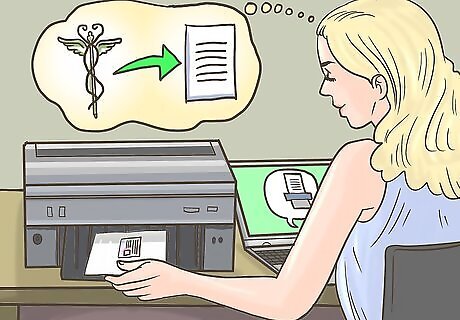
views
Talking to a Representative

Call your state’s health and human services department. Go online to find the number for your state’s health and human services department on their website, most likely under the “Contact Us” page. If you still have your old Medicaid card, look on the card to find the specific number you’ll need to make the call. To find your state's health and human services website, go online and type in your state plus "health and human services" into the search engine.

Order your replacement card using the automated system. Most times, to get a new Medicaid card, you won’t speak to a real person. Use the automated system to select a language preference and answer the questions asked of you, ultimately resulting in your replacement Medicaid card.

Provide your Medicaid identification number and other personal information. Once you’ve made the call, you’ll need to be able to verify your identity. They’ll ask for your Medicaid ID number, social security number, birthday, and address. If you’re not sure what your Medicaid ID is, you’ll need to select the option to speak with a representative.

Visit your local social services agency to submit a request in person. If you’re near a local social services agency, you can request a new Medicaid card through an in-person visit. The representatives at the agency will be able to walk you through the steps of getting a new card. Go online to find out where your local social services agency is. If you still have your old Medicaid card, you can call the customer service number listed on the card to find the location as well.

Receive your Medicaid card in the mail. This can take anywhere from 10 to 30 days, depending on your state. If you need proof of your Medicaid coverage before your card arrives, use the letter that you were sent stating that you qualify for coverage. Your provider will be able to use the letter to verify your coverage.
Accessing a Replacement Online

Go to your state’s health and human services website. You can find your state's health and human services website by pulling up a search engine and typing in your state and then "health and human services."

Find the Medicaid page on the website. If your state's health and human services website has a tab that says "Medicaid," click on it. If you can’t find the Medicaid page, type in something such as “Medicaid replacement card” into a search box.

Log in to your Medicaid account. Many states will ask you to log in to your Medicaid account before you’re able to request a new card. If you’ve already created an account, you should have your login information in your email. If you don’t have an account, you’ll be able to create one.

Fill in the required information or choose the “Replacement Documents” tab. Some states may show a “Replacement Documents” tab that you just need to click on. Once you click on this, you’ll be able to select an option to get your replacement card sent to you in the mail. Submit the request once you’re done. Other states may require you to provide additional information before mailing you your card, such as your name, social security number, and birth date. If you can’t find the right page, do a quick online search for instructions for how to access your specific state’s Medicaid replacement card page.

Wait for your Medicaid card to be delivered. Once you've submitted your online request, your new Medicaid card will be mailed to you. How long it will take to arrive depends on which state you live in, so check the website for specific details. The form that you submit should include the information about your mailed Medicaid card, including the date you should receive it by. Make sure your address is up-to-date so that your card is sent to the right place. Some states mail your new card to you within 10 days, while others take 30 days.

Print your Medicaid card out at home, if possible. Some states, such as Texas and California, allow you the option to print a replacement Medicaid card out at home. All you have to do is log into your Medicaid account online and start up your printer.


















Comments
0 comment